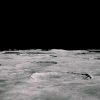New Horizons delivers first images of icy world since Pluto flyby

The New Horizons space probe is bringing new images of a remnant of the early solar system, after its historic brush with Pluto last summer, reports ABC News.
According to ABC News, the piano-size probe is currently speeding through the Kuiper Belt, a vast area at the edge of the solar system encompassing Pluto and thousands of smaller icy objects.
Since traveling beyond Pluto's orbit, New Horizons has been able to conduct its first science mission: getting a look at 1994 JR1, a 90-mile-wide world in the Kuiper Belt, reports ABC News.
NASA released an image of 1994 JR1, taken by New Horizons' Long Range Reconnaissance Imager from a distance of 69 million miles — the closest look yet at the Kuiper Belt object.
The probe allowed the New Horizons team to determine that the object rotates once every 5.4 hours, which is surprisingly fast for an object in the Kuiper Belt.
Source: ABC News

 For all latest news, follow The Daily Star's Google News channel.
For all latest news, follow The Daily Star's Google News channel. 








Comments